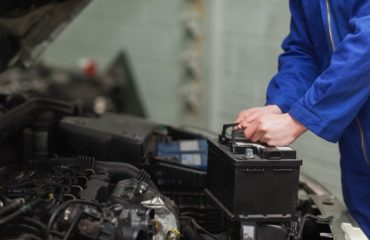
Let’s Talk About Car Battery Troubles
A failed battery is one of the most common culprits behind vehicle breakdowns, accounting for 52% of incidents in cars six years or younger. Despite advancements in technology, batteries remain a weak link, often falling victim to issues like acid stratification and improper charging habits. These problems not only impact performance but can also lead to costly disruptions and reduced customer satisfaction.
Driving habits play a significant role in battery health. Short trips paired with heavy accessory use, such as heaters and wipers, prevent the battery from achieving a full charge. Over time, this leads to reduced efficiency and a higher likelihood of failure. With factory defects responsible for less than 7% of battery malfunctions, it’s clear that how we use and maintain our batteries matters most.
Understanding the causes of battery failure helps us take proactive steps to ensure reliability and avoid unnecessary breakdowns.
Looking After Your Vehicle Battery
Proper care extends the lifespan of your vehicle battery and improves its reliability. Regular maintenance ensures it performs efficiently in all driving conditions, reducing the risk of unexpected breakdowns.
- Routine Inspections
Checking your battery periodically helps identify issues like swelling, corrosion, or leakage. Visual damage often signals the need for replacement before complete failure occurs. Look for a clean and undamaged terminal and ensure all connections are firm. - Clean Terminals
Dirt, grease, and corrosion on battery terminals restrict power flow. Use a mild cleaning solution or baking soda with water to remove build-up. When connections are clean, reattach tightly to maintain power efficiency. - Limit Electrical Usage
Avoid heavy use of electrical accessories when the engine is off. Keeping headlights, radios, or air conditioning systems active while the car’s stationary drains the battery unnecessarily and shortens its life. - Charge Fully
Frequent short trips prevent a full recharge, causing poor battery performance over time. Where possible, combine journeys or use a battery charger periodically to maintain optimal charge levels. - Monitor Age
Most lead-acid batteries last 3–5 years, though this varies by usage and care. Track when your battery was installed, and consider replacing it as it nears the upper end of its expected lifetime to avoid failure.
Proper use, cleaning, and regular attention to your vehicle battery minimise risks and maintain its functionality. These measures reduce costs and prevent avoidable breakdowns.
Why Do Batteries Fail?
Battery failures often result from a combination of mechanical, chemical, and usage-related issues. Understanding the main causes can help us take preventive measures to improve battery reliability and longevity.
1. Acid Stratification
Acid stratification is a frequent issue in lead-acid batteries. The problem occurs when the electrolyte separates, causing the solution to concentrate at the bottom of the battery while the top becomes acid-deficient. This imbalance reduces overall efficiency and capacity. Low charge levels, often below 80%, and short journeys with high electrical demands, such as using heaters and wipers, exacerbate stratification. Without regular full charges, this condition worsens, hampering performance.
2. Parasitic Drains
Parasitic drains occur when electrical components continue to draw power even when the car is switched off. Common culprits include interior lights left on or faulty systems like alarm sensors or controllers. Over time, these unnoticed drains deplete the battery charge, leading to unexpected failure.
3. Improper Charging Habits
Improper charging is a significant reason for battery failure in today’s vehicles. Short drives prevent batteries from reaching a fully charged state, especially when paired with high accessory usage. This repeated undercharging leads to sulfation, reducing the battery’s ability to hold power and shortening its lifespan.
4. Driving Patterns
Driving habits significantly affect battery performance. Vehicles operated mostly on short routes or in congested urban areas, such as 10 km daily in cities like Brisbane, Sydney or Melbourne, rarely reach optimal charge levels. Such conditions promote sulfation and acid stratification, especially in small batteries designed for basic functions.
5. Age and Natural Degradation
Most car batteries last between 3 and 5 years. Over time, their efficiency diminishes due to wear from repeated charging cycles. As they age, the internal components become less effective, increasing the likelihood of failure, particularly during peak demands like starting the engine in cold climates.
6. Environmental and Mechanical Factors
Extreme temperatures, both high and low, significantly affect battery performance. Cold weather impairs a battery’s cranking power, while heat speeds up internal chemical reactions, leading to faster degradation. Physical damage, swelling caused by internal pressure, or corroded terminals can further contribute to failures.
By identifying these key factors, we can proactively maintain our batteries and extend their lifespan.
We Come To You
A failed battery can disrupt our daily routines and lead to unexpected costs, but with the right knowledge and care, we can significantly reduce the risk. By adopting better driving habits, staying vigilant with maintenance, and addressing issues early, we can keep our batteries performing reliably for longer. Has your car, 4×4 or truck battery failed? Organise a battery replacement today by getting in touch with Wide Bay Batteries on 0406 653 956 or use our contact form here.
- Maryborough
- Hervey Bay
- Gympie
- Bundaberg
- Tinana
- Tiaro
- Burrum Heads
- Childers
- Isis






